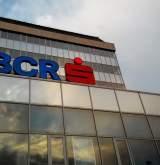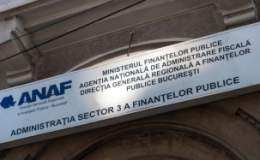Recent monetary policy rate moves
The decisions made in the yesterday’s session came as a surprise to the market observers once again, the central bank putting an end to its round of monetary policy easing, following growing uncertainties in the economy and the political crisis.
“The evolution of macro indicators indicate a delayed consolidation in the disinflationary process, a persistence of the economic contraction and an ongoing adjustment of output gap, coupled with a worsening outlook of foreign investors over the domestic economy, as well as growing political tensions”, the central bank said in a press release.
NBR also warned that inflationary pressures fueled by excise adjustment as of January 1, were likely to escalate further, and the gap between interbank rates and monetary policy rate would remain on a short-term. The central bank expects “significant spillovers from growing fiscal policy risks to general economic outlooks in the context of a volatile political climate”.
In the first rate-setting session of the year, on January 6, the central bank decided to keep key rate at 10.25% and required reserve ratio for leu liabilities at 18% and for fx liabilities at 40%. Later on, NBR cut its prime rate for the first time, to 10%, citing negative outlooks on the Romanian economy for the remainder of the year.
The first positive signal for bankers came as late as in March when the policymaking group pared to bone the required reserve ratio for fx liabilities with residual maturity higher than two years, effective of May 24, from 40%.
In May, the central bank continued the round of rate cuts and surprised financial markets with an aggressive half-point reduction in key lending rate. “In an effort to secure real monetary conditions adequate both to the convergence of inflation rate to the medium-term objectives, as well as a sustainable recovery of lending activity in the Romanian economy, the board of the National Bank of Romania has decided to reduce the monetary policy rate to 9.5% from 10%”, the central bank said in a follow-up press release.
In June, another half-point cut was operated by the central bank, to 9%, but chopped reserve requirements for leu liabilities to 15% (from 18%), and RRR for fx liabilities to 35% (from 40%), effective as of July 24.
Monetary policy easing continued in August with another half-point cut to 8.5% and a reduction in required reserve ratio for fx liabilities to 30%. In its August session, the central bank decided to shorten the maturity of its repo operations to one week from one month, in order to provide an adequate liquidity management in the market.
At the end of September, the last session in the former configuration of the policymaking board, the central bank cut the key rate once again by 50basis points to 8% and left required reserve ratio unchanged.
NBR�s future monetary policy actions
Bankers were the most disappointed by NBR’s actions, after putting their bets on a monetary policy rate and RRR cut, to reduce market interests, hoping the central bank would free more cash in the market.
“The National Bank of Romania has decided to leave monetary policy rate and reserve requirements unchanged, due to the uncertainties persisting in the market. The series of rate cut will be resumed when we will return within the parameters agreed with the International Monetary Fund, and when political commitments will be made to put an end to the growing uncertainties”, Ionut Dumitru, senior economist of Raiffeisen Bank told Wall-Street.
Yesterday, the central bank has also set the annual inflation target for 2011 at 3.0 percent with +/-percentage point tolerance band. The inflation target is to be discussed with the government.
The annual inflation rate fell to 4.94% in September, the lowest level since July 2007, but which remains high compared to other European Union countries.
“NBR’s rate moves came as a response to the growing pressures generated by the IMF deal over the exchange rates, and serve as a shield for the local currency. Next year, the central bank will continue this round of monetary easing when uncertainties will disperse”, Laurian Lungu, managing partner at Macroanalitica told Wall-Street.
























































![HR [PLAY] Tech Workout - 11...](https://www.wall-street.ro/image_thumbs/thumbs/973/973fe0a3888d417feff63de42e814180-260x260-00-65.jpg?v=1714835769)










